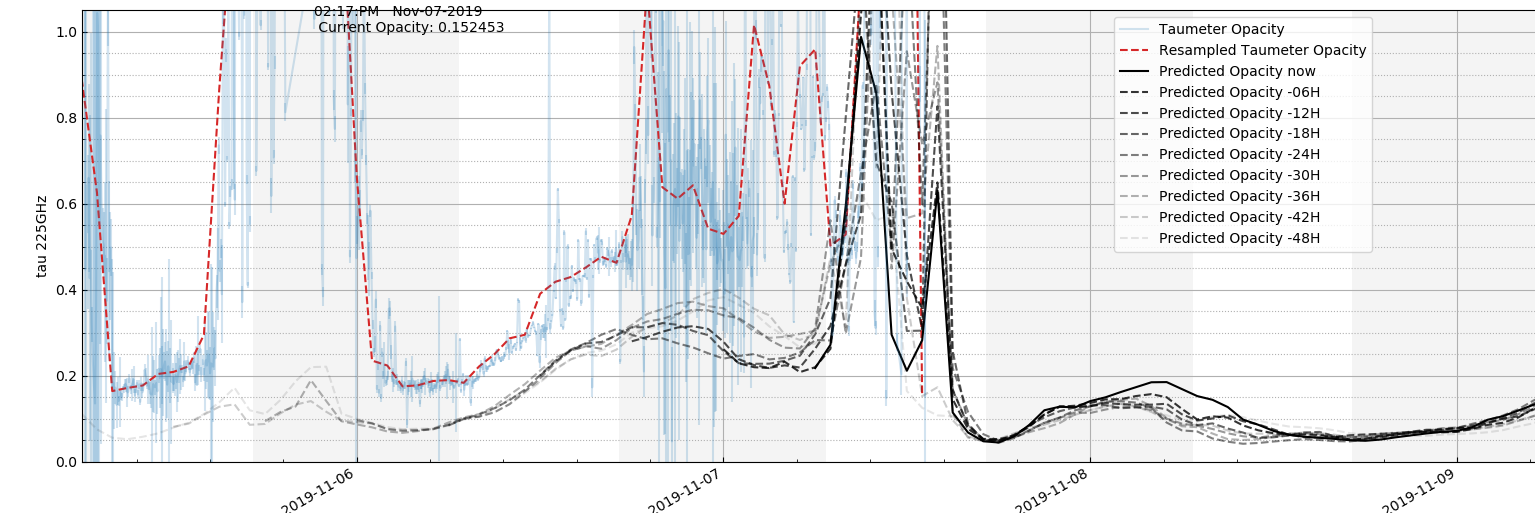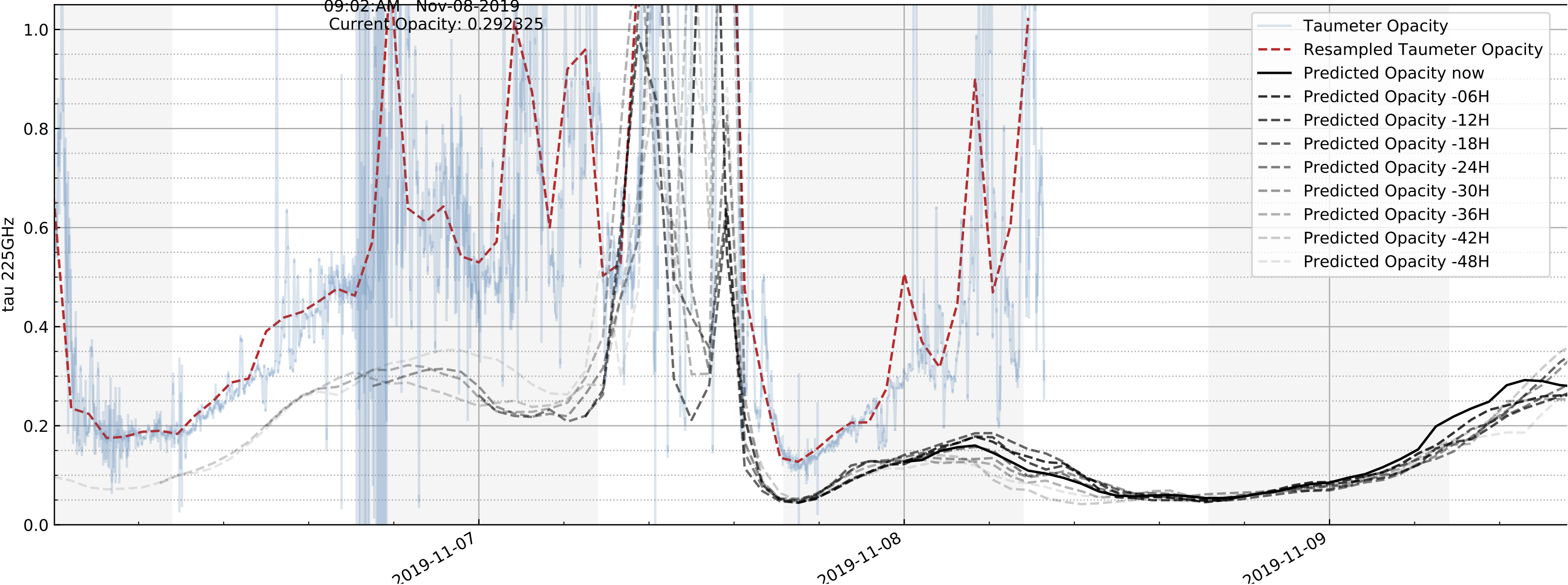Daily Reports
Contents
Alexandre Beelen, Florian Kéruzoré, Bilal Ladjelate, Tony Mroczkowski, and Florian Ruppin arrive at the telescope for the 4th NIKA2 week of the summer semester.
Nov 5th, Tuesday
Weather is too bad to observe. It will improve during the night.
Nov 6th, Wednesday
2:00UT Alexandre and Florian K. We start by doing a skydip. Weather is good enough to start doing projects so we perform all the necessary pointing/focus observations and start project 091-19. We then move to project 028-19.
5:00UT Florian R & Tony take over. Everything went smoothly after 2am --> quite stable opacity until 9:00UT. We continued 028-19, then switched to 091-19, and then to 092-19. At some point the source in 092-19 went over 80 deg so we switched to 199-16. The opacity started to increase around 12:00UT and the beam shape got worst (afternoon).
Nov 7th, Thursday
The weather kept getting worst the whole afternoon of yesterday. We reached an average opacity of ~0.8 at 225GHz and a very unstable atmosphere this night. We could not observe today but weather is expected to improve after ~20:00UT.
Nov 8th, Friday
As expected, the weather did improve yesterday evening. We reached an opacity of ~0.1 at 225GHz BUT strong wind kicked in and we had to stop the telescope... We have been able to resume observations at tau ~0.3 at 225GHz with a quite unstable atmosphere. We stopped observing around ~3am because the atmosphere was too unstable to maintain the tuning. We managed to resume the observations during the afternoon and got the best opacities of the run so far and a stable atmosphere. Contrarily to previous afternoons we have been able to maintain a good focus (similar to what we have during good nights). After making sure these were stable observing conditions, we continued project 092-19 for 3h30 and then switched to the GASTON project.
Nov 9th, Saturday
Very good/stable weather conditions during most of the night but opacity started increasing around ~3am. We ran project 199-16 during ~2h30 starting from midnight and for 2h from 6:30 to 8:30am (UTC). Then the opacity started to increase quite significantly. However, the atmosphere was stable enough and we managed to spend some time on project 092-19. Opacity at 225 GHz started to be around 0.5 at ~10:00UT so we could not observe any available project (following the README files). Uranus was not available at the time but we decided to go on Mars to get some calibration scans for the run. Its angular size at the time of the year is ~3.75 arcsec. We did a pointing, focus, pointing, launched a small calibration scan (calibration_1scan) and then a beammap. We then launched a skydip at an opacity of ~0.5 at 225 GHz, followed by a pointing and a focus on Mars to check the beam stability before and after the beammap.
Nov 10th, Sunday
The weather was poor during the night and the deicing has been switched on to avoid the formation of ice on the primary dish. At 1PM, the effects are still to be seen on the beam, and cloud coverage is 7-8.



